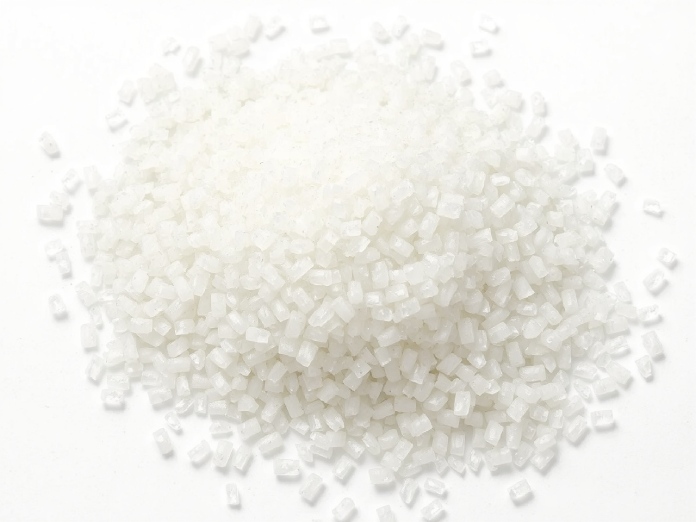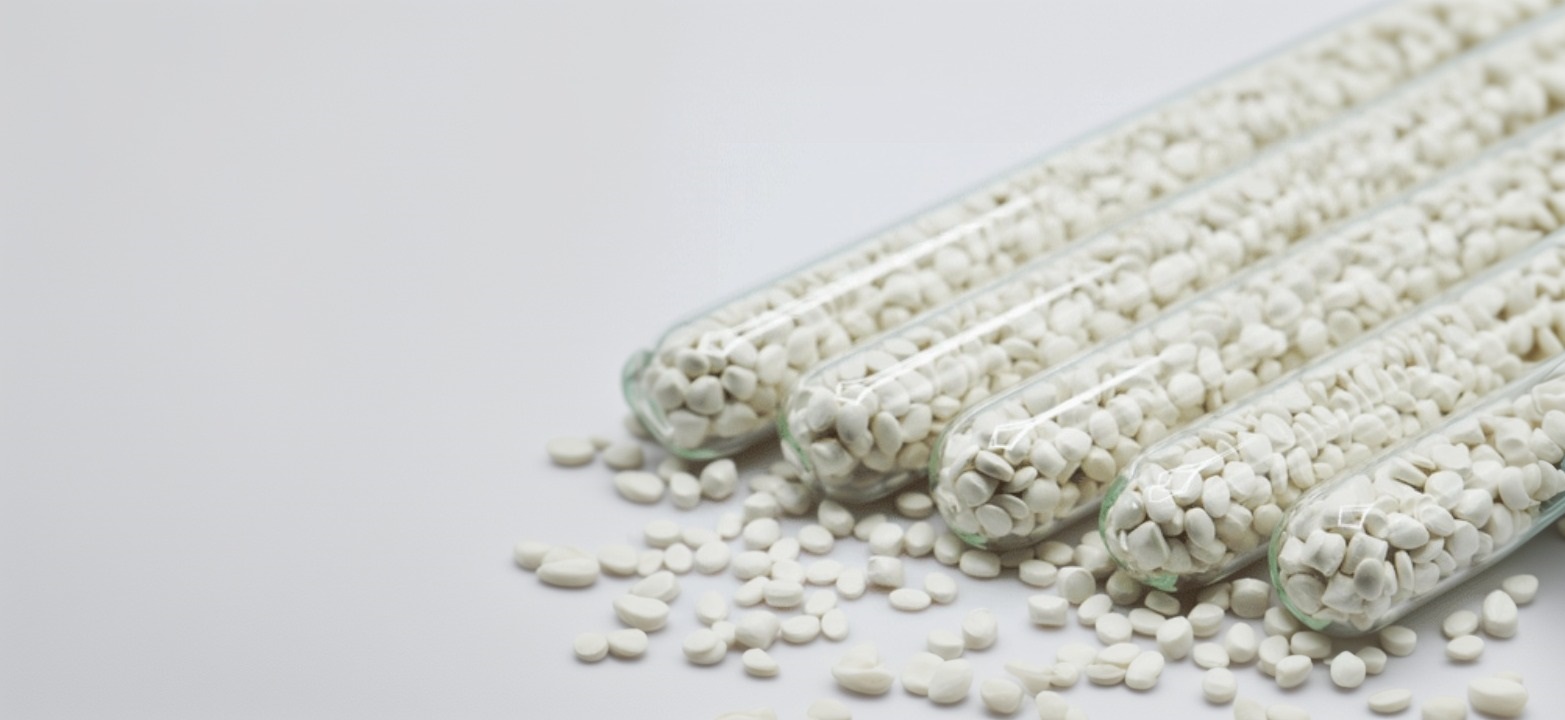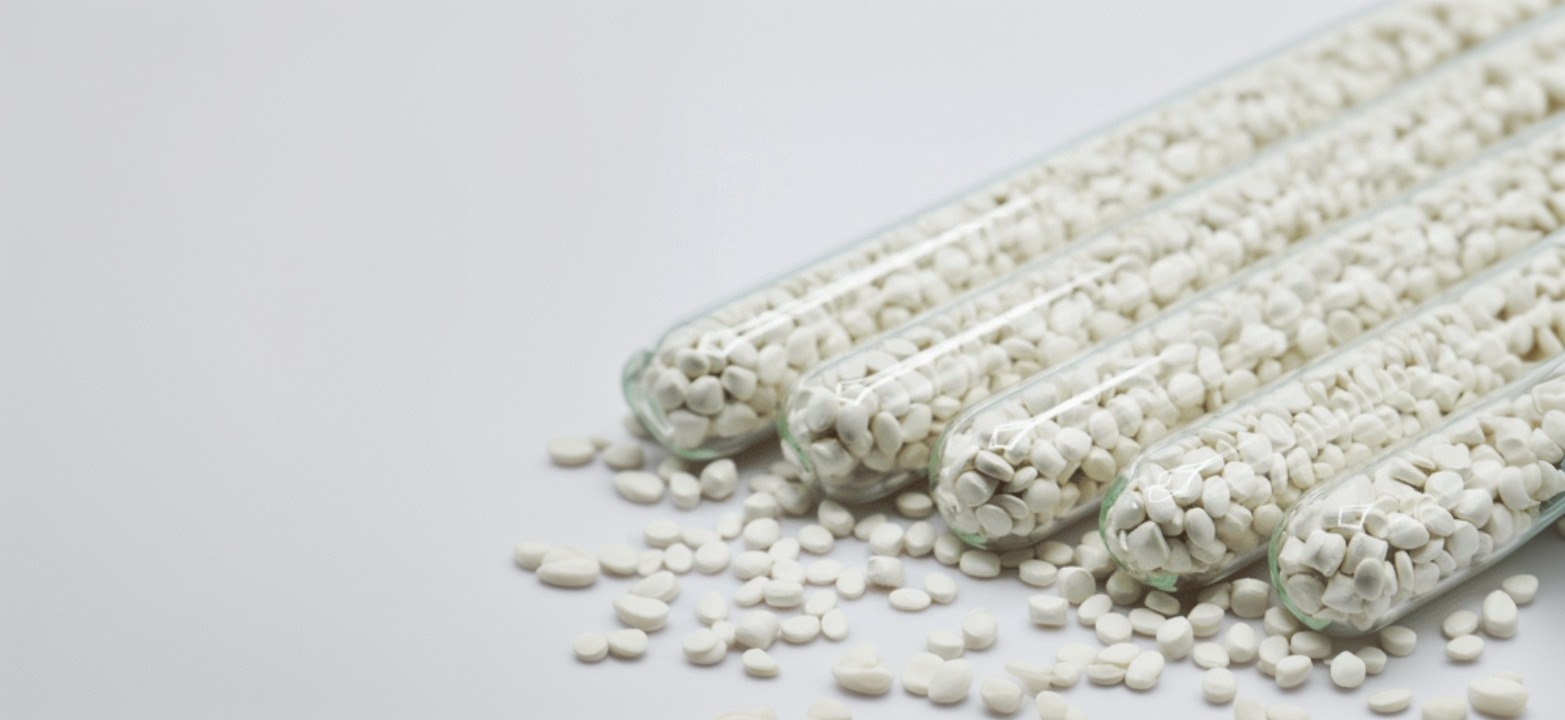Polypropylene
Properties of Polypropylene compounds
Polypropylene (PP) compounds exhibit a unique combination of chemical, mechanical, and thermal properties that make them highly versatile across various industries. Structurally, PP is similar to polyethylene, particularly in terms of electrical behavior and solution characteristics. However, the presence of methyl groups on the polymer chain enhances its mechanical strength and thermal resistance, although this comes with a slight reduction in chemical resistance.
Mechanically, polypropylene is recognized for its low density, ranging between 0.895 and 0.93 g/cm³, making it the lightest of all commodity plastics. This characteristic allows for the production of lightweight molded parts with cost efficiency. The material offers a Young’s modulus in the range of 1300–1800 N/mm², providing a good balance between stiffness and flexibility. PP is particularly tough and flexible when copolymerized with ethylene, enabling its use in engineering applications where durability and formability are essential. Additionally, polypropylene shows excellent resistance to fatigue, maintaining structural integrity under repeated stress.
Thermally, isotactic polypropylene has a melting point between 160–166°C, while perfectly isotactic forms can melt at around 171°C. Below 0°C, however, PP tends to become brittle. Despite this, its thermal expansion is less than that of polyethylene, providing better dimensional stability under heat.
Chemically, polypropylene is resistant to most fats, organic solvents, acids, and bases at room temperature. It dissolves in certain nonpolar solvents at high temperatures and has reduced resistance to strong oxidizing agents. The melt flow rate (MFR) is a key processing property that affects how easily PP flows during molding; however, higher MFR values can reduce impact strength.
| Property | Description |
|---|---|
| Density | 0.895 – 0.93 g/cm³ (lowest among commodity plastics) |
| Young’s Modulus | 1300 – 1800 N/mm² |
| Melting Point | 160 – 171°C (depending on isotacticity) |
| Brittleness Temperature | Becomes brittle below 0°C |
What are Polypropylene compounds typically used for?
Packaging:
Polypropylene (PP) compounds are extensively used in packaging due to their excellent balance of strength, low cost, and moisture barrier properties. They are ideal for a variety of packaging solutions such as food packaging films, containers, and shrink wraps. Their moisture resistance and chemical inertness make them suitable for electronic and graphic films, as well as disposable closures like diaper tabs. Additionally, cast and biaxially oriented polypropylene (BOPP) films are widely used for their superior clarity, strength, and moisture barrier characteristics, making PP a preferred choice in both consumer and industrial packaging.
Consumer Goods:
PP compounds find broad application in manufacturing consumer goods. Transparent containers, household appliances, toys, suitcases, and furniture components are commonly made from PP due to its lightweight nature and mechanical durability. Its ability to be easily molded and its aesthetic flexibility allow manufacturers to produce various shapes and designs, meeting consumer demands for functional and visually appealing products.
Automotive Industry:
In the automotive sector, polypropylene compounds are vital because of their cost-effectiveness, moldability, and mechanical performance. PP is used to manufacture components such as bumpers, fender liners, battery casings, door trims, and interior panels. The polymer's low thermal expansion, lightweight nature, and excellent chemical and weather resistance make it ideal for automotive applications requiring durability and resistance to harsh environments. Moreover, PP provides a good balance between impact resistance and stiffness, which is crucial for vehicle safety and performance.
Fibers and Fabrics:
Polypropylene plays a dominant role in the production of fibers and fabrics. Nonwoven and woven fabrics made from PP include ropes, tapes, spunbond, and meltblown fabrics. These fibers are widely used in industrial and marine environments due to their excellent strength, chemical resistance, and durability. PP fibers also find applications in textile manufacturing for specialized uses where moisture resistance and low weight are important.
Medical Applications:
Medical-grade polypropylene compounds are used extensively because of their biocompatibility, chemical resistance, and sterilization capability. PP is the material of choice for disposable syringes, petri dishes, lab containers, intravenous (IV) bottles, medical vials, and food-grade trays. Its inert nature ensures safety in medical environments, while its ease of molding allows for mass production of reliable, sterile medical products.
Industrial Uses:
In industrial settings, polypropylene sheets and molded components are used to produce chemical tanks, industrial pipes, returnable transport packaging (RTP), and liners resistant to corrosive substances. PP’s chemical resistance and durability ensure longevity and reliability in harsh industrial environments, making it suitable for applications where exposure to acids, bases, or solvents is common.
Biaxially Oriented Polypropylene (BOPP) Films:
BOPP films are a specialized class of polypropylene products stretched biaxially to enhance mechanical properties. These films offer improved strength, clarity, tear resistance, gloss, and moisture barrier properties. Their dimensional stability and versatility make them suitable for high-performance packaging applications, especially in the food and consumer goods industries where visual appeal and product protection are critical.



